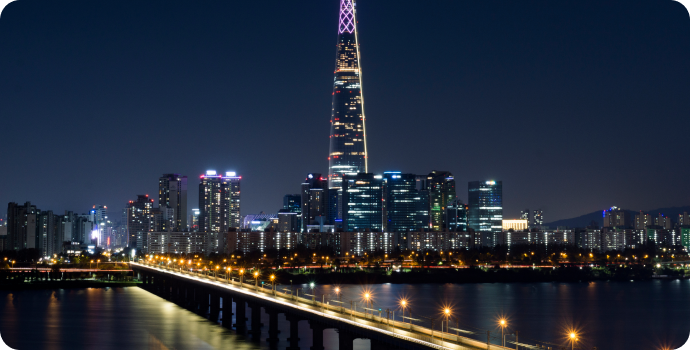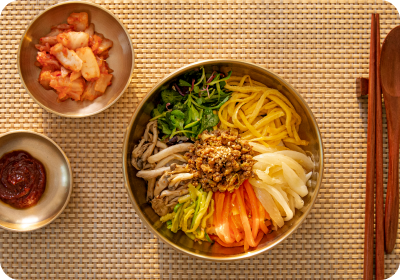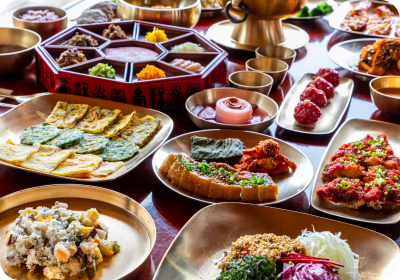-
APELSO 2023
-
Faculty
-
Program
-
Call for abstracts
-
Registration
-
About Korea
-
Board
About Korea
About Korea
Korea (Republic of Korea) 
The Korean Peninsula is divided between the North and South, making Korea one of the few divided countries in the world.
Korea has four distinct seasons, each with their own stunning scenes. In the spring, forsythia, cherry blossoms, azaleas and many other flowers are in full bloom; in the summer, vacationers head to the coasts to enjoy the beach; autumn brings crimson colors to mountain foliage. In the winter, land is covered with a blanket of white snow.
The Korean economy is driven by the manufacturing and exports including ships, automobiles, mobile phones, PCs, TVs, and a wide range of other electronics. Korea has enjoyed rapid economic growth thanks in large part to its export-focused strategy. In 2018, Korea's GDP was USD $1 trillion 5,380 hundred million dollars (IMF). The nation boasts the world's 11th-largest economy (IMF 2018). Recently, Korean pop culture gains popularity over the world. Dramas and movies are widely exported and K-pop stars are also active on the world stage.
The total population of Korea is approximately 51.7 million (August 2017), with most of the population residing in the Seoul metropolitan area. Outside of Seoul, other large and economically advanced cities such as Busan, Incheon, Daegu, Daejeon, Gwangju and Ulsan also have higher population densities than other cities in Korea.
Korea Facts & Figures
-
Official Name of South Korea
The Republic of Korea (ROK)
-
Capital City
Seoul
-
Area (2016)
Korea Peninsula : 223, 477㎢
South Korea : 100,339㎢
-
Population (2016)
51.24million
-
Political System
Democratic Republic, Presidential System
-
President
Yoon Seok Yeol
-
Language
Korean (Writing System : Han-geul)
-
Economic Statistics (2016)
GDP : US$ 1.411 trillion
Per capita GNI : US$ 27,561
GDP Growth Rate : 2.8%
-
Currency Unit (2017)
Won (US$1=1,130 won)



The Food
-

- Bibimbap
- Bibimbap is a popular Korean dish that contains many ingredients mixed in a bowl along with rice and hot pepper paste. It is also one of the most representative Korean dishes, along with bulgogi and kimchi.
There was a long standing tradition, among Korean ancestors, that any leftover food on New Year's Eve was not to be kept into the New Year. For this reason, the practice of mixing various ingredients in a bowl with rice was started
-

- Kimchi
- Kimchi is one of the most popular foods in Korea, and also exported worldwide. Despite its spicy flavor with hot pepper and garlic, it is popular among many foreigners.
-

- Bulgogi
- Bulgogi is the most typical Korean beef dish and is one of the most favored Korean dishes amongst foreigners. During the Goryeo Dynasty, the dish developed into seolyameokjeok, which means a grilled dish people eat on a snowy night. During the Joseon Dynasty, it changed into neobiani, or Royal Court food.
-

- Traditional Korean Set Meal
- Bulgogi is the most typical Korean beef dish and is one of the most favored Korean dishes amongst foreigners. During the Goryeo Dynasty, the dish developed into seolyameokjeok, which means a grilled dish people eat on a snowy night. During the Joseon Dynasty, it changed into neobiani, or Royal Court food.
Convenience
Seoul is served by two international airports. Incheon International Airport is the main airport located just 30 miles from Seoul while Gimpo International Airport is just 40 minutes away. A modern 12 line subway system connects every corner of Seoul and has signs, maps and announcements in English. Together with the bus lane system, implemented to prevent traffic congestion, and taxis with free interpretation service all combines to make getting around Seoul simple and economic.
-

- Transportation
- Fares can be paid by cash or transportation card. One-time boarding charges a flat-rate fare where you can pay by cash or transportation card
- Seoul city buses offer a free ride for a maximum of 3 children under the age of 6 so long as they are accompanied by a guardian
- Seoul, Gyeonggi-do, Incheon buses and metropolitan subways are under the Metropolitan Integrated Fare System, so they charge a basic fare up to 10km. Using Seoul metropolitan buses, Gyeonggi-do general buses, non-stop deluxe buses, Incheon buses, and red buses for more than one transfer will cost a basic rate up to 30km, and you will be charged an extra 100 won for each additional 5 km (based on the adult fare).
-

- Health care
- The Seoul Global Center (SGC) launched by Seoul Metropolitan Government operates a 24-hour Medical Referral Service (MRS) for foreign nationals. Medically trained, English-speaking staff provide information and recommendations on medical facilities and services. The MRS team has striven to provide quality medical information by regularly visiting medical facilities that offer medical services to foreigners. The team constantly seeks to make improvements by collecting feedback from foreign nationals.
-

- Entertainment
- Seoul is an exciting city where day or night you have 24-hour access to various leisure and entertainment spots. Seoul attracts many famous performers year-round and provides a great variety of performances be it art, music, dance or theater. To top it all off after a show, you can still enjoy shopping or a soothing massage and spa treatment, providing a unique Seoul experience.





